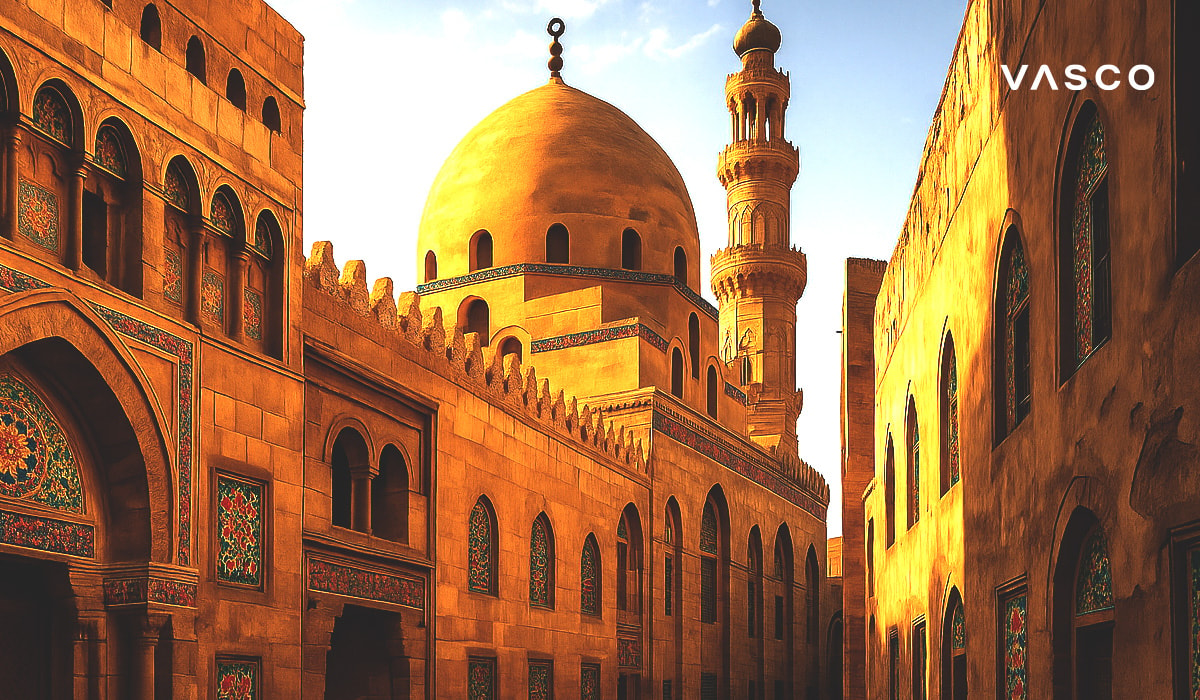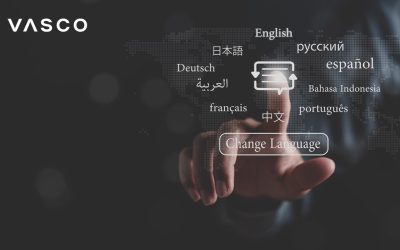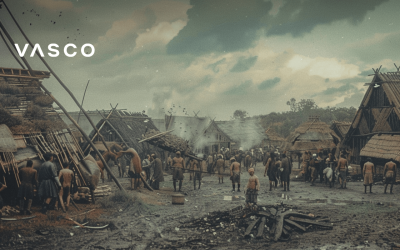It’s written from right to left, has no capital letters, and its flowing script looks more like an intricate work of art than a mere alphabet. Arabic is elegant, mysterious, and steeped in centuries of culture. But this language is much more than just a beautiful script. It’s one of the oldest and most widely spoken languages today, with deep roots stretching back over 1,500 years and a massive footprint across the modern world.
Table of Contents:
Whether you’re a language enthusiast, a curious traveller eager to learn how to say hello in Arabic language, or simply someone fascinated by linguistic diversity, you’re in the right place.
In this article, we’ll dive into the rich history of Arabic language, reveal the countries where Arabic is spoken, and explore how it has shaped cultures, sciences, and stories across the world. Plus, we’ll tackle popular questions, such as: Is Arabic a hard language to learn? How many countries speak Arabic? And what makes this Semitic language so enduring and unique?
A Language That Crosses Time and Borders
So, how old is the Arabic language, and where exactly is it spoken? To get the full picture, we need to travel back in time.
Arabic belongs to the Central Semitic language family, along with Hebrew and Amharic. Its earliest form — known as Old Arabic — appears in inscriptions left by nomadic tribes, dating back several centuries before the rise of Islam. When examining how old is Arabic language, we find that the version we now recognize as Classical Arabic began to take shape between the 4th and the 6th century CE, in the heart of the Arabian Peninsula. And that was just the beginning.
The turning point came in the 7th century, with the rapid Arabic spread that followed the Islamic conquests. The language extended far beyond its Arabian birthplace — reaching across North Africa, the Levant, the Persian Gulf, and the Middle East. What began as a regional dialect soon evolved into the language of empire, religion, science, and poetry.
FAQ:
How many countries speak Arabic?
Is Arabic hard to learn?
Is Arabic the oldest language in the world?
How old is the Arabic language?
How many countries’ official language is Arabic?
Which African countries speak Arabic?

The history of Arabic language explains why it is the official language in 22 countries today, and is spoken by over 400 million Arabic speakers. That makes it the fifth most widely spoken language in the world — and its influence stretches far beyond those native speakers, thanks to centuries of cultural integration throughout the Islamic world.
Countries Where Arabic Is Spoken
We already know how many countries speak Arabic as an official language, but where exactly are these nations located? The Arabic-speaking world stretches across an impressive geographic area from the Atlantic Ocean to the Arabian Sea, making Arabic one of the most geographically widespread languages on Earth.
In what countries is Arabic spoken? Here’s a breakdown:
| Region | Countries Where Arabic Is Official Language | Notes |
| North Africa | Morocco, Algeria, Tunisia, Libya, Egypt, Sudan | Core of the Arab World in Africa |
| Horn & Central Africa | Djibouti, Somalia, Chad | Extends Arabic presence across African continent |
| East Africa (Islands) | Comoros | Island nation off East Africa |
| West Africa | Mauritania | Western Africa presence |
| The Levant | Syria, Lebanon, Jordan, Palestine | Crossroads of Arabic-Mediterranean culture, distinct dialects reflecting rich histories |
| Arabian Peninsula | Saudi Arabia, United Arab Emirates, Qatar, Bahrain, Kuwait, Oman, Yemen | Origin region of Arabic language, the Gulf states central to preservation |
| Mesopotamia | Iraq | Completes the 22 official Arabic-speaking countries |
| Other Significant Communities | Turkey, Iran, Israel, Worldwide Diaspora | Beyond official status, substantial Arabic-speaking populations |
Quick Facts:
- 10 out of 22 countries where Arabic is spoken are located on the African continent
- Arabic is the liturgical language of over 1.8 billion Muslims worldwide, making it significant far beyond native speakers
- In many countries, Arabic is also recognized as a national, working, or minority language — even when not official
- Arabic is one of the six official languages of the United Nations, alongside English, French, Chinese, Russian, and Spanish
Arabic Dialects vs. Modern Standard Arabic: One Language, Many Voices
Here’s where Arabic language gets fascinating — and perhaps a bit confusing for newcomers. While we talk about Arabic as a single language, the reality is much more nuanced. What you’ll encounter across Arabic-speaking countries is actually a rich tapestry of regional dialects alongside a formal, standardized version of the language.
Modern Standard Arabic (MSA) serves as the official and often national language in many Arabic-speaking countries. It’s the formal version used in writing, news broadcasts, official speeches, and education. Think of it as the “formal Arabic” that unites the Arab world — from Morocco to Iraq, educated Arabic speakers can read the same book and understand it perfectly.
But step into the streets of Cairo, Beirut, or Casablanca, and you’ll hear something quite different. Spoken dialects — the everyday versions of the Arabic language — vary significantly from country to country, and sometimes even within regions of the same country. These colloquial Arabic dialects have evolved over centuries, influenced by local languages, historical events, and cultural exchanges.

How different are Arabic dialects?
The variation can be quite substantial. A Moroccan speaking their local dialect might struggle to understand a conversation in Gulf Arabic, and vice versa. It’s somewhat similar to how speakers of related languages can catch some words and general meaning but would need to switch to a common language for full communication.
The most widely understood dialect is Egyptian Arabic, largely due to Egypt’s historic dominance in Arabic cinema, television, and music throughout the 20th century. Many Arabic speakers across the region can understand Egyptian Arabic, even if they don’t speak it natively — making it something of a lingua franca within the Arab world. Other influential dialects include Levantine Arabic and Moroccan Arabic, each carrying strong cultural weight. When considering in what countries is Arabic spoken, it’s important to understand that each region has developed its own distinct dialect over centuries.
This unique linguistic landscape means that Arabs are often bilingual in their own language, seamlessly switching between their local dialect for casual conversation and Modern Standard Arabic for formal communication, writing, and cross-regional understanding.
The Arabic Script: Beauty in Every Curve
Remember that “intricate work of art” we mentioned at the beginning? Let’s dive into what makes Arabic writing so visually stunning — and surprisingly logical once you understand how it works.
The Arabic language flows from right to left, which might feel unfamiliar if you’re used to Latin scripts, but there’s something almost meditative about the way Arabic text unfolds across the page. Unlike many languages, where letters stand separately, Arabic letters connect to each other, creating that flowing, continuous line that gives Arabic its distinctive elegance.
Here’s where it gets interesting: Arabic letters change their shape depending on where they appear in a word. Each letter has up to four different forms — one for when it stands alone, one for the beginning of a word, one for the middle, and one for the end. It’s like each letter is a shape-shifter, adapting to fit perfectly with its neighbors.

The Arabic alphabet consists of 28 letters, all of which are consonants. Vowels exist, but they’re typically written as small marks above or below the letters — and here’s the fascinating part: most Arabic text doesn’t include these vowel marks. Experienced readers fill in the vowels from context, much like how you can read abbreviated text and understand the meaning from situation.
No capital letters exist in the Arabic language — instead, emphasis and formality come through different letter forms and calligraphic styles. This creates a visual consistency that contributes to the Arabic language’s flowing appearance.
The script isn’t just functional; it’s deeply artistic. Arabic calligraphy has been elevated to high art for over a thousand years, with master calligraphers creating works that are simultaneously text and visual masterpiece. From the geometric patterns of Kufic script to the flowing curves of Naskh, each calligraphic style carries its own aesthetic and historical significance.
Is Arabic Hard to Learn? The Reality Behind the Reputation
Now for the question that’s probably been on your mind since the beginning: Is Arabic a hard language to learn? The honest answer is that the Arabic language has a reputation for being challenging — and some of that reputation is deserved. But it’s not the insurmountable mountain many people imagine.
Language learning experts classify Arabic as one of the more time-intensive languages for many learners, with an estimated 2,200 class hours needed to reach proficiency. But before you get discouraged, remember that this timeline assumes traditional classroom study and doesn’t account for individual motivation, immersion, or modern Arabic courses tailored for different learning styles.
So, what makes it hard for Arabic learners?
The writing system presents the first hurdle. Reading right-to-left, connecting letters that change shape, and filling in missing vowels from context all require rewiring your brain’s reading patterns. It’s like learning to drive on the opposite side of the road — not impossible, but it takes conscious effort at first.

Grammar complexity is another factor. The Arabic language has intricate verb conjugations that change based on gender, number, person, and tense. The language also uses a dual form (for exactly two of something) alongside singular and plural.
Pronunciation includes sounds that don’t exist in many languages, like the emphatic consonants and the various forms of ‘h’ and ‘a’ sounds. However, Arabic pronunciation is actually quite consistent — unlike many languages, Modern Standard Arabic follows fairly predictable rules.
But here’s the encouraging news: Arabic has several features that actually make it more logical than English once you understand the system. There are no irregular spellings to memorize (if you can pronounce it, you can spell it), and the root system creates predictable word families that make vocabulary acquisition more systematic than random memorization.
Tech Tip for Arabic Learners: Let Vasco Do the Talking
Whether you’re exploring Arabic-speaking countries, navigating unfamiliar dialects, or simply want to communicate with ease, smart translation tools like Vasco Translator V4 or Vasco Translator E1 can be invaluable companions.
Both devices support Modern Standard Arabic as well as many regional dialects, helping you understand native speakers in real time. Whether you’re asking for directions, reading signs, or having a quick chat, Vasco lets you interact naturally — with free unlimited internet.
Instead of stressing over pronunciation or memorizing phrases, you can focus on the experience itself. And for those learning Arabic, Vasco is also a great way to reinforce vocabulary and improve confidence along the way.
The Genius of Arabic: How Three Letters Create Entire Vocabularies
Here’s where the Arabic language reveals its true brilliance — a linguistic feature so elegant that once you understand it, you’ll never look at the language the same way again. The Arabic language operates on a root system that’s like having a master key to unlock thousands of words.
How does the Arabic root system work? Almost every word in the Arabic language is built from a three-letter root that carries a core meaning. These three consonants are like the DNA of the word — they contain the essential concept, and everything else is built around them.
Take the root K-T-B (ك-ت-ب), which carries the meaning of “writing.” From these three letters, the Arabic language creates an entire family of related words:
| Root-Based Word | Arabic Script | Meaning |
| Kitab | كتاب | Book |
| Kataba | كتب | He wrote |
| Kātib | كاتب | Writer |
| Maktab | مكتب | Office |
| Maktaba | مكتبة | Library |
| Maktoob | مكتوب | Written/Letter |
See the pattern? Once you know that K-T-B means “writing,” you can decode dozens of related words.
Another example: The root Q-R-A (ق-ر-أ) means “reading”:
| Root-Based Word | Arabic Script | Meaning |
| Qara’a | قرأ | He reads |
| Qur’an | قرآن | The Quran (the reading) |
| Qāri’ | قارئ | Reader |
| Maqra’ | مقرأ | Reading room |
| Muqri’ | مقرئ | Quran reciter |
This system means that Arabic language vocabulary isn’t random — it’s systematically organized. When you learn one root, you’re actually learning the key to understanding multiple related words. It’s like learning word families, but far more systematic and predictable.
Why this matters for learners? Instead of memorizing thousands of unrelated words, you can learn a few hundred roots and then recognize patterns to decode new vocabulary. It transforms the Arabic language from a subject of overwhelming memorization into a logical puzzle you can solve.

This root system also explains why the Arabic language has such rich vocabulary for specific concepts — each root can generate dozens of related words with subtle variations in meaning, creating precise vocabulary for every shade of an idea. How many words are in the Arabic language? Estimates suggest over 12 million words can be formed from the root system, though practical vocabulary is much smaller.
Arabic’s Global Footprint: Words You Already Know
Think the Arabic language is completely foreign to you? Think again. You’ve been encountering Arabic-derived words your entire life without even realizing it. The Arabic language has left its fingerprints on languages around the world.
Arabic words hiding in English include some of the most common terms we use daily:
- Algebra (الجبر) — from “al-jabr,” meaning “reunion of broken parts”
- Algorithm (الخوارزمي) — named after the 9th-century mathematician Al-Khwarizmi
- Coffee (قهوة) — from “qahwa”
- Sugar (سكر) — from “sukkar”
- Cotton (قطن) — from “qutn”
- Magazine (مخزن) — from “makhzan” (storehouse)
Spanish and Portuguese carry even more Arabic influence, thanks to over 700 years of Arabic presence in Iberia. Many words in these European languages trace back to Arabic origin.
Arabic’s scientific legacy is perhaps even more impressive. During the Islamic Golden Age (8th-13th centuries), Arabic was the language of science, mathematics, medicine, and philosophy. Arabic-speaking scholars preserved and expanded upon Greek and Roman knowledge, making crucial advances in:
- Mathematics: Arabic numerals, algebra, trigonometry
- Medicine: Surgical techniques, pharmacology, anatomy
- Astronomy: Star names like Aldebaran, Altair, and Vega
- Chemistry: Distillation, laboratory techniques, chemical processes
This Arabic influence extended far beyond the Arab country borders, reaching Central and Western Asia and influencing African languages as well. The Arabic language served as a bridge between different civilizations, facilitating knowledge transfer across continents.
Conclusion: Why Arabic Matters Today
As we reach the end of our journey through the Arabic language, it’s worth reflecting on why this ancient tongue remains so vitally important in our modern world.
Understanding the history of Arabic language reveals that it isn’t just a language, it’s a bridge to understanding one of the world’s most influential civilizations. When you consider how old is Arabic language and its development over millennia, you’re not just acquiring vocabulary and grammar; you’re gaining access to 1,500 years of poetry, philosophy, science, and human expression. You’re connecting with over 400 million native speakers and 1.8 billion people who encounter the Arabic language through their faith.
Ahlan wa sahlan — welcome to the beautiful world of the Arabic language. Your journey starts now.











